July
Showing 1–24 of 82 results
Plant blooms in July.
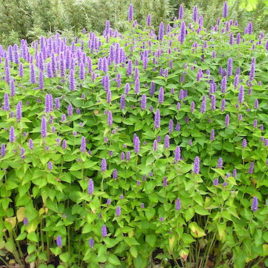
Agastache foeniculum
Agastache foeniculum, or Anise Hyssop, is a 2-3 foot perennial member of the mint family. Anise Hyssop’s leaves produce a strong anise or licorice scent when crushed, and its bluish-purplish flowers appear in July through September. The plant grows in … Continued
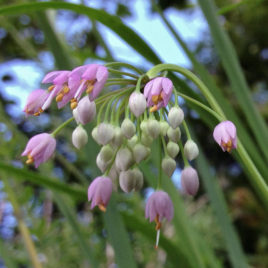
Allium cernuum
Allium cernuum, or Nodding Onion, is a 1-2 foot, attractive allium with white to pink nodding flowers on 2’ stalks. Nodding Onion thrives in full sun to part sun in moderately rich to stony soils from July to August. Plant … Continued
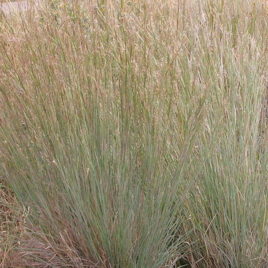
Andropogon scoparium
Andropogon scoparium, or Little Bluestem, is a short warm season clump grass with a dense root system, growing best in average, dry soil and full sun. Once established, Little Bluestem has good drought resistance as it tolerates high heat and … Continued
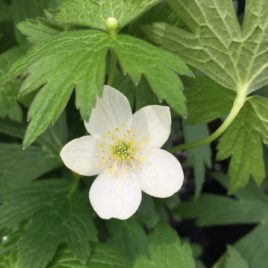
Anemone canadensis
Anemone canadensis, or Canada Anemone, is a 1-2 foot perennial that prefers the full sun to part shade with moist soil. Canada Anemone acts as a great ground cover and features deep green foliage covered with white, cup-shaped flowers in … Continued
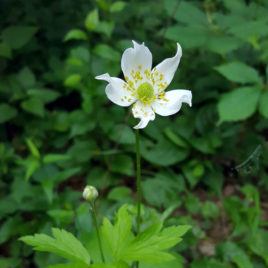
Anemone virginiana
Anemone virginiana, or Tall Thimbleweed, is a 2-4 foot perennial member of the Buttercup family. It grows in full sun to shade and in average to dry soils. Tall Thimbleweed’s leaves are strongly veined with distinct stalks. Tall Thimbleweed produces … Continued
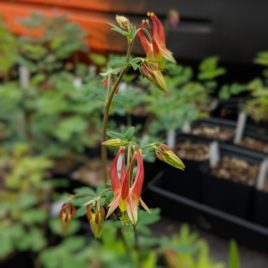
Aquilegia canadensis
Aquilegia canadensis, or Columbine, is a classic woodland wildflower with lacy blue-green foliage and beautiful red and yellow flowers. Hummingbirds flock to its flowers, and it reseeds itself freely.
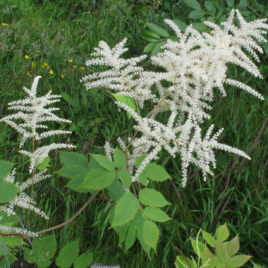
Aruncus dioicus
Aruncus dioicus, or Goat’s Beard, is a perennial member of the rose family growing in moist woods, meadows, and along streams. Goat’s Beard is a very showy plant growing 3 to 5 feet tall in large bushy clumps. The plant … Continued
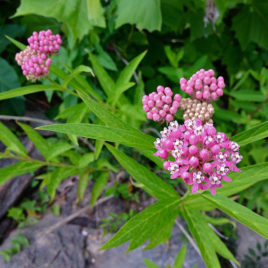
Asclepias incarnata
Asclepias incarnata, or Red Milkweed, is a 3-5 foot perennial perfect for full sun and moist to wet soils. Red Milkweed, or Swamp Milkweed, blooms with reddish flowers from June to July. Its leaves are the preferred food of Monarch … Continued
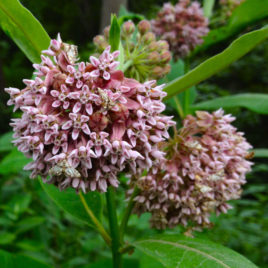
Asclepias syriaca
Asclepias syriaca, or Milkweed, is a herbaceous perennial with pink flowers serving as a great nectar source for butterflies. Its leaves are a food source for Monarch butterfly larvae. Milkweed, or Common Milkweed, is easily grown in average, dry to … Continued
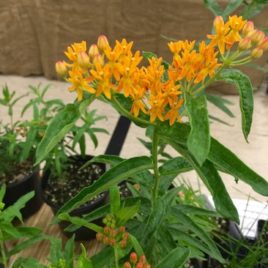
Asclepias tuberosa
Asclepias tuberosa, or Butterfly Milkweed is a 1-2 foot dazzling member of the Milkweed family. Butterfly Milkweed leaves are lance-shaped, and its flowers are a brilliant orange. Preferring dry to medium, well-drained soils in full sun, Butterfly Milkweed appears from … Continued
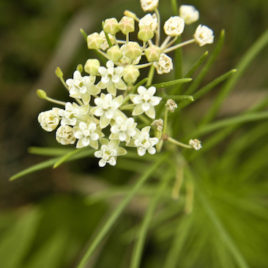
Asclepias verticillata
Asclepias verticillata, or White Milkweed, is a deep-rooted perennial with small greenish-white flowers blooming in small clusters between July to August. The late-blooming milkweed makes it a valuable late-season food source for Monarch butterflies and their caterpillars.
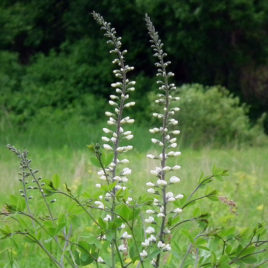
Baptisia alba
Baptisia alba, or White Wild Indigo, is a 2-4 foot, long-lived herbaceous perennial that prefers full to part sun and dry to medium, moist soils. Although White Wild Indigo tolerates poor soils. All Baptisia species are nitrogen-fixing legumes, meaning they … Continued
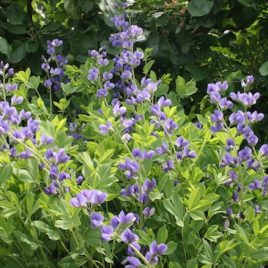
Baptisia australis
Baptisia australis, or Blue Wild Indigo, is a 3-5 foot, hardy, long-lived perennial legume for full sun to light shade and well-drained medium moist soils. The attractive, dark blue flowers and glossy blue-green trifoliate leaves on Blue Wild Indigo bloom … Continued
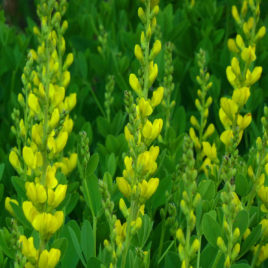
Baptisia tinctoria
Baptisia tinctoria, or Yellow Wild Indigo, is a shrub-like perennial with silvery, gray-green leaves and bright pea-shaped flowers in late spring. The plant grows best in full sun or part sun. Young plants tend to get off to a slow … Continued
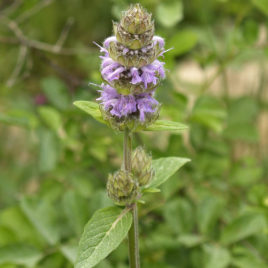
Blephilia ciliata
Blephilia ciliata, or Downy Wood Mint, is a perennial with tight purple flowers stacked on top of each other, reaching up to one foot tall. It thrives in almost any soil from dry to moist and requires full to part … Continued
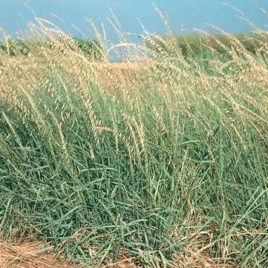
Bouteloua curtipendula
Bouteloua curtipendula, or Sideoats Grama, is short, hardy prairie grass, growing in dry to medium moisture soils and full sun. Side Oats Grama has narrow blue-green foliage with purple flowers appearing in early to mid summer. The leaves turn golden … Continued
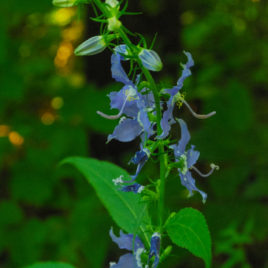
Campanula americana
Campanula americana, or Tall Bell Flower, is a 4-5 foot biennial for full shade to full sun and rich, well-drained, moist soils. Its deep blue flowers appear in July to early September. Tall Bell Flower is found in moist meadows … Continued
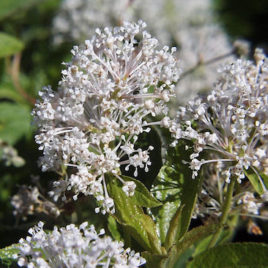
Ceanothus americanus
Ceanothus americanus, or New Jersey Tea, is a 2-3 foot, hardy, perennial, woody shrub for well-drained dry to medium soils in part to full sun. New Jersey Tea produces bright white flowers growing in July through August. Younger plants get … Continued
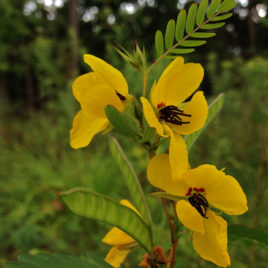
Chamaecrista fasciculata
Chamaecrista fasciculata, or Partridge Pea, is an annual plant with yellow flowers with deep red stamens favored by bees and other pollinators, blooming June to August. Partridge Pea features symmetrical foliage with blue-green leaves that retreat when touched.
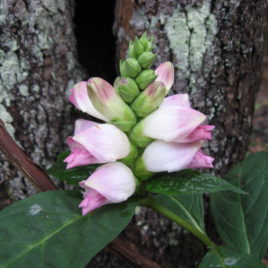
Chelone glabra
Chelone glabra, or Turtlehead, is a 2-3 foot wetland perennial for wet meadows and rich moist to average soils that blooms in late summer-early fall. Turtlehead’s creamy white flower resembles a turtle’s head. It serves as a nectar plant and … Continued
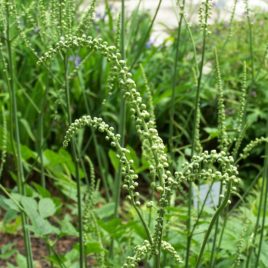
Cimicifuga racemosa
Cimicifuga racemosa, or Black Cohosh, is a 3-5 foot perennial with excellent compound foliage and soaring wand-like white flower spikes in summer. Black Cohosh can be found in part sun to full shade and moist, well-drained soils. Historically, the roots … Continued
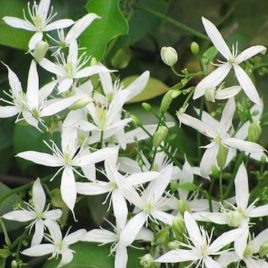
Clematis virginiana
Clematis virginiana, or Virgin’s Bower, is a beautiful native vine with white flowers that twine by twisting leaf stalks around vertical supports. Without support, the vine will sprawl along the ground, creating a dense groundcover. Virgin’s Bower produces fragrant blooms … Continued
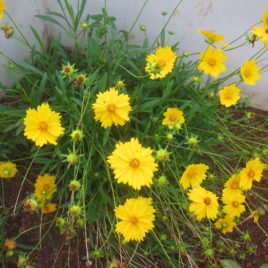
Coreopsis lanceolata
Coreopsis lanceolata, or Lanceleaf Coreopsis, is a 2 foot, tough perennial often used in wildflower mixes. Lanceleaf Coreopsis prefers dry, well-drained soils in full sun to part shade and produces brilliant, yellow, daisy-like flowers from June to July. The plant … Continued
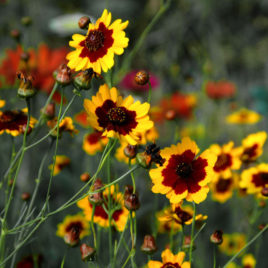
Coreopsis tinctoria
Coreopsis tinctoria, or Plains Tickseed, is a 2-4 foot annual species that prefers the full sun to moderate shade and well-drained soils. The plant is good for areas with poor or dry soils. Plains Tickseed is a very showy flower … Continued

